
MARS5-TTS
MARS5 speech model (TTS) from CAMB.AI
Stars: 2108
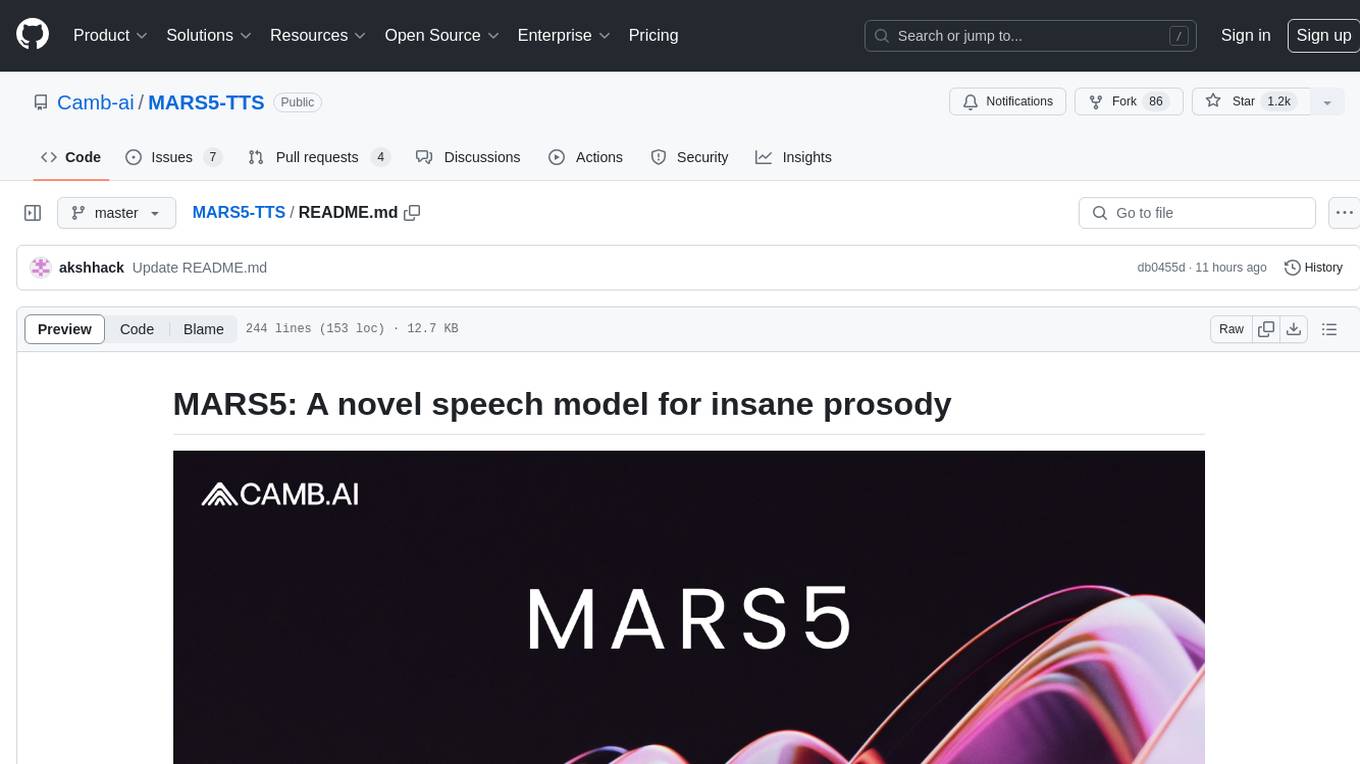
MARS5 is a novel English speech model (TTS) developed by CAMB.AI, featuring a two-stage AR-NAR pipeline with a unique NAR component. The model can generate speech for various scenarios like sports commentary and anime with just 5 seconds of audio and a text snippet. It allows steering prosody using punctuation and capitalization in the transcript. Speaker identity is specified using an audio reference file, enabling 'deep clone' for improved quality. The model can be used via torch.hub or HuggingFace, supporting both shallow and deep cloning for inference. Checkpoints are provided for AR and NAR models, with hardware requirements of 750M+450M params on GPU. Contributions to improve model stability, performance, and reference audio selection are welcome.
README:
<> July 5, 2024: Latest AR checkpoint released: higher stability of output. Very big update coming soon!
This is the repo for the MARS5 English speech model (TTS) from CAMB.AI.
The model follows a two-stage AR-NAR pipeline with a distinctively novel NAR component (see more info in the Architecture).
With just 5 seconds of audio and a snippet of text, MARS5 can generate speech even for prosodically hard and diverse scenarios like sports commentary, anime and more. Check out our demo:
https://github.com/Camb-ai/MARS5-TTS/assets/23717819/3e191508-e03c-4ff9-9b02-d73ae0ebefdd
Figure: The high-level architecture flow of MARS5. Given text and a reference audio, coarse (L0) encodec speech features are obtained through an autoregressive transformer model. Then, the text, reference, and coarse features are refined in a multinomial DDPM model to produce the remaining encodec codebook values. The output of the DDPM is then vocoded to produce the final audio.
Because the model is trained on raw audio together with byte-pair-encoded text, it can be steered with things like punctuation and capitalization. E.g. To add a pause, add a comma to that part in the transcript. Or, to emphasize a word, put it in capital letters in the transcript. This enables a fairly natural way for guiding the prosody of the generated output.
Speaker identity is specified using an audio reference file between 2-12 seconds, with lengths around 6s giving optimal results. Further, by providing the transcript of the reference, MARS5 enables one to do a 'deep clone' which improves the quality of the cloning and output, at the cost of taking a bit longer to produce the audio. For more details on this and other performance and model details, please see the docs folder.
- CAMB.AI website (access MARS in 140+ languages for TTS and dubbing)
- Technical details and architecture: in the docs folder
- Colab quickstart:
- Sample page with a few hard prosodic samples: https://camb-ai.github.io/MARS5-TTS/
- Online demo: here
We use torch.hub to make loading the model easy -- no cloning of the repo needed. The steps to perform inference are simple:
-
Installation using pip:
Requirements:
- Python >= 3.10
- Torch >= 2.0
- Torchaudio
- Librosa
- Vocos
- Encodec
- safetensors
- regex
pip install --upgrade torch torchaudio librosa vocos encodec safetensors regex- Load models: load the MARS5 AR and NAR model from torch hub:
import torch, librosa
mars5, config_class = torch.hub.load('Camb-ai/mars5-tts', 'mars5_english', trust_repo=True)
# The `mars5` contains the AR and NAR model, as well as inference code.
# The `config_class` contains tunable inference config settings like temperature.(Optional) Load Model from huggingface (make sure repository is cloned)
from inference import Mars5TTS, InferenceConfig as config_class
import torch, librosa
mars5 = Mars5TTS.from_pretrained("CAMB-AI/MARS5-TTS")- Pick a reference and optionally its transcript:
# Load reference audio between 1-12 seconds.
wav, sr = librosa.load('<path to arbitrary 24kHz waveform>.wav',
sr=mars5.sr, mono=True)
wav = torch.from_numpy(wav)
ref_transcript = "<transcript of the reference audio>"Note: The reference transcript is optional. Pass it if you wish to do a deep clone.
MARS5 supports 2 kinds of inference: a shallow, fast inference whereby you do not need the transcript of the reference (we call this a shallow clone), and a second slower, but typically higher quality way, which we call a deep clone. To use the deep clone, you need the prompt transcript. See the model architecture for more info on this.
- Perform the synthesis:
# Pick whether you want a deep or shallow clone. Set to False if you don't know prompt transcript or want fast inference. Set to True if you know transcript and want highest quality.
deep_clone = True
# Below you can tune other inference settings, like top_k, temperature, top_p, etc...
cfg = config_class(deep_clone=deep_clone, rep_penalty_window=100,
top_k=100, temperature=0.7, freq_penalty=3)
ar_codes, output_audio = mars5.tts("The quick brown rat.", wav,
ref_transcript,
cfg=cfg)
# output_audio is (T,) shape float tensor corresponding to the 24kHz output audio.That's it! These default settings provide pretty good results, but feel free to tune the inference settings to optimize the output for your particular usecase. See the InferenceConfig code or the demo notebook for info and docs on all the different inference settings.
Some tips for best quality:
- Make sure reference audio is clean and between 1 second and 12 seconds.
- Use deep clone and provide an accurate transcript for the reference.
- Use proper punctuation -- the model can be guided and made better or worse with proper use of punctuation and capitalization.
Pull from DockerHub
You can directly pull the docker image from our DockerHub page.
Build On Your Own
You can build a custom image from the provided Dockerfile in this repo by running the following command.
cd MARS5-TTS
docker build -t mars5ttsimage ./dockerNote: This image should be used as a base image on top of which you can add your custom inference script in a Dockerfile or docker-compose. Images that directly generate output will be added to Docker Hub and as Dockerfiles in this repo soon
Checkpoints
The checkpoints for MARS5 are provided under the releases tab of this github repo. We provide two checkpoints:
- AR fp16 checkpoint [~750M parameters], along with config embedded in the checkpoint.
- NAR fp16 checkpoint [~450M parameters], along with config embedded in the checkpoint.
- The byte-pair encoding tokenizer used for the L0 encodec codes and the English text is embedded in each checkpoint under the
'vocab'key, and follows roughly the same format of a saved minbpe tokenizer.
The checkpoints are provided as both pytorch .pt checkpoints, and safetensors .safetensors checkpoints. By default, the torch.hub.load() loads the safetensors version, but you can specify which version of checkpoint you prefer with the ckpt_format='safetensors' or ckpt_format='pt' argument the in torch.hub.load() call. E.g. to force safetensors format:
torch.hub.load('Camb-ai/mars5-tts', 'mars5_english', ckpt_format='safetensors')
Or to force pytorch .pt format when loading the checkpoints:
torch.hub.load('Camb-ai/mars5-tts', 'mars5_english', ckpt_format='pt')
Hardware Requirements:
You must be able to store at least 750M+450M params on GPU, and do inference with 750M of active parameters.
If you do not have the necessary hardware requirements and just want to use MARS5 in your applications, you can use it via our API. If you need some extra credits to test it for your use case, feel free to reach out to [email protected].
MARS5 is not perfect at the moment, and we are working on improving its quality, stability, and performance. Rough areas we are looking to improve, and welcome any contributions in:
- Improving inference stability and consistency
- Speed/performance optimizations
- Improving reference audio selection when given long references.
- Benchmark performance numbers for MARS5 on standard speech datasets.
Specific tasks
- [ ] Profile the GPU and CPU memory and runtime speed metrics of the current model, add to readme.
- [ ] Port model operations not supported by MPS to equivalents to speed up apple mac inference. E.g.
site-packages/torch/nn/functional.py:4840: UserWarning: The operator 'aten::col2im' is not currently supported on the MPS backend and will fall back to run on the CPU. This may have performance implications. - [ ] Cleanly add more performant ODE samplers to DDPM inference code (even just DPM++2M would be great).
- [ ] Make demo/ user-interface program to rapidly collect human preference ratings between two audio samples, one generated by the model, and one ground truth.
- [ ] Implement a way to do long-form generation. E.g. one possibility is to chunk long intput text into smaller pieces and then synthesize the codes each in turn, concatenating them, and vocoding the final result.
- [ ] Perform a search (e.g. beam or grid) on the autoregressive sampling settings to find the setting preset which give the best quality.
If you would like to contribute any improvement to MARS5, please feel free to contribute (guidelines below).
We welcome any contributions to improving the model. As you may find when experimenting, it can produce really great results, it can still be further improved to create excellent outputs consistently. We'd also love to see how you used MARS5 in different scenarios, please use the 🙌 Show and tell category in Discussions to share your examples.
Contribution format:
The preferred way to contribute to our repo is to fork the master repository on GitHub:
- Fork the repo on github
- Clone the repo, set upstream as this repo:
git remote add upstream [email protected]:Camb-ai/mars5-tts.git - Make a new local branch and make your changes, commit changes.
- Push changes to new upstream branch:
git push --set-upstream origin <NAME-NEW-BRANCH> - On github, go to your fork and click 'Pull Request' to begin the PR process. Please make sure to include a description of what you did/fixed.
We are open-sourcing MARS5 in English under GNU AGPL 3.0. For commercial inquiries or to license the closed source version of MARS, please email [email protected]
We're an ambitious team, globally distributed, with a singular aim of making everyone's voice count. At CAMB.AI, we're a research team of Interspeech-published, Carnegie Mellon, ex-Siri engineers and we're looking for you to join our team.
We're actively hiring; please drop us an email at [email protected] if you're interested. Visit our careers page for more info.
Join CAMB.AI community on Forum and Discord to share any suggestions, feedback, or questions with our team.
Parts of code for this project are adapted from the following repositories -- please make sure to check them out! Thank you to the authors of:
- AWS: For providing much needed compute resources (NVIDIA H100s) to enable training of the model.
- TransFusion: https://github.com/RF5/transfusion-asr
- Multinomial diffusion: https://github.com/ehoogeboom/multinomial_diffusion
- Mistral-src: https://github.com/mistralai/mistral-src
- minbpe: https://github.com/karpathy/minbpe
- gemelo-ai's encodec Vocos: https://github.com/gemelo-ai/vocos
- librosa for their
.trim()code: https://librosa.org/doc/main/generated/librosa.effects.trim.html
For Tasks:
Click tags to check more tools for each tasksFor Jobs:
Alternative AI tools for MARS5-TTS
Similar Open Source Tools

MARS5-TTS
MARS5 is a novel English speech model (TTS) developed by CAMB.AI, featuring a two-stage AR-NAR pipeline with a unique NAR component. The model can generate speech for various scenarios like sports commentary and anime with just 5 seconds of audio and a text snippet. It allows steering prosody using punctuation and capitalization in the transcript. Speaker identity is specified using an audio reference file, enabling 'deep clone' for improved quality. The model can be used via torch.hub or HuggingFace, supporting both shallow and deep cloning for inference. Checkpoints are provided for AR and NAR models, with hardware requirements of 750M+450M params on GPU. Contributions to improve model stability, performance, and reference audio selection are welcome.
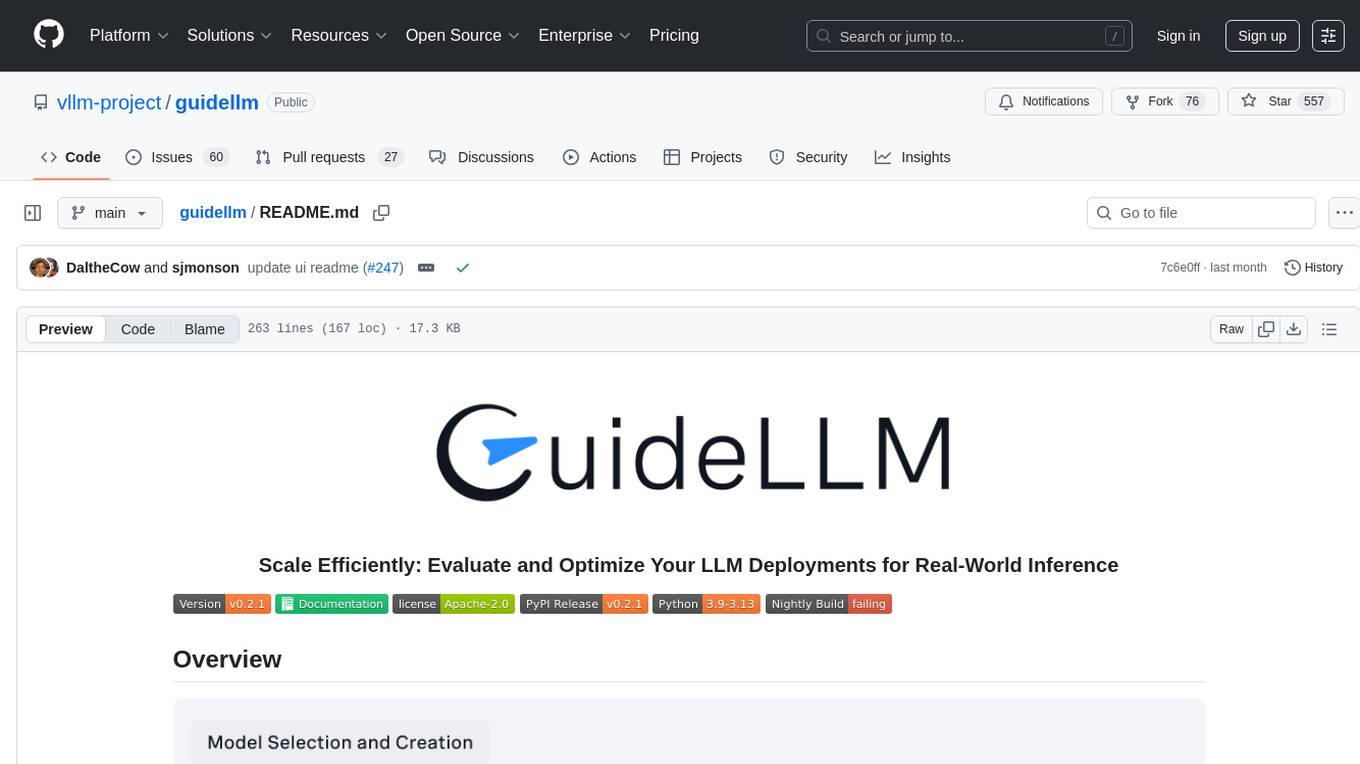
guidellm
GuideLLM is a platform for evaluating and optimizing the deployment of large language models (LLMs). By simulating real-world inference workloads, GuideLLM enables users to assess the performance, resource requirements, and cost implications of deploying LLMs on various hardware configurations. This approach ensures efficient, scalable, and cost-effective LLM inference serving while maintaining high service quality. The tool provides features for performance evaluation, resource optimization, cost estimation, and scalability testing.
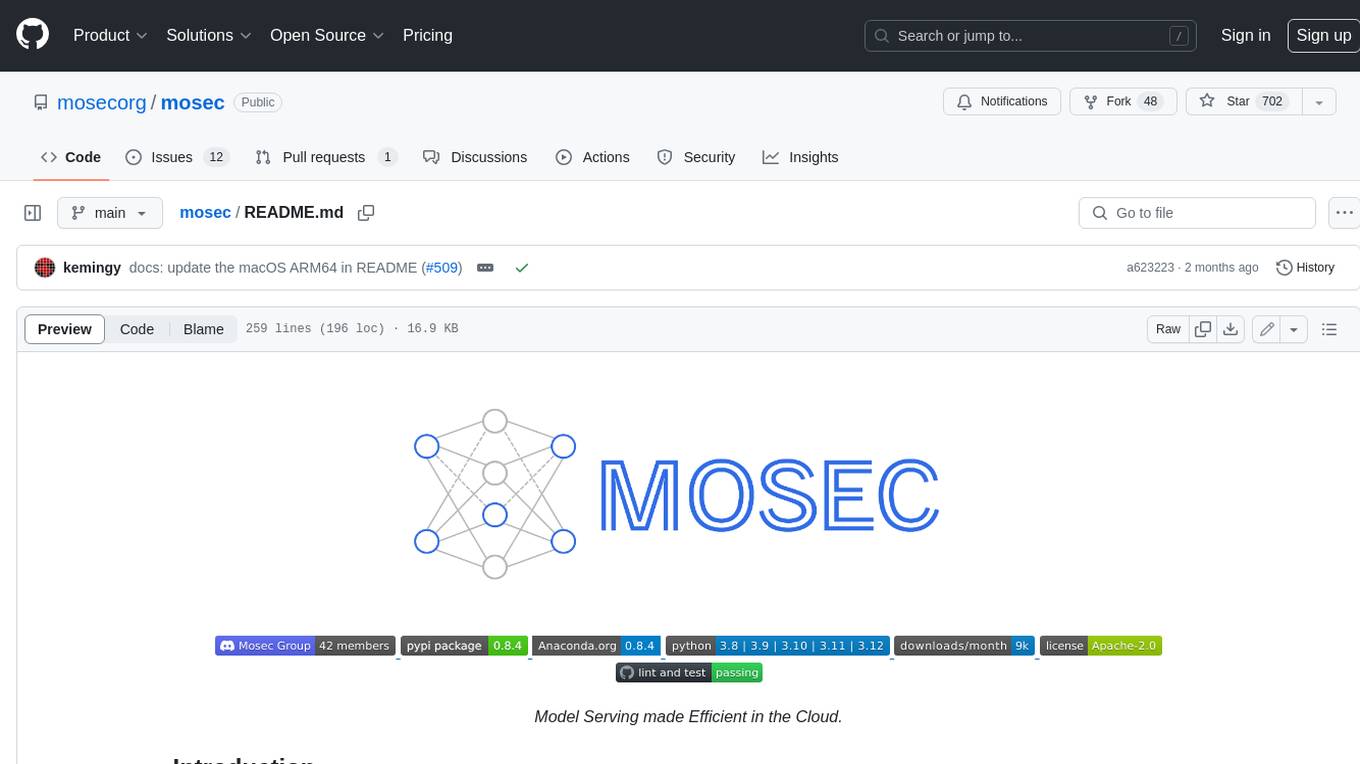
mosec
Mosec is a high-performance and flexible model serving framework for building ML model-enabled backend and microservices. It bridges the gap between any machine learning models you just trained and the efficient online service API. * **Highly performant** : web layer and task coordination built with Rust 🦀, which offers blazing speed in addition to efficient CPU utilization powered by async I/O * **Ease of use** : user interface purely in Python 🐍, by which users can serve their models in an ML framework-agnostic manner using the same code as they do for offline testing * **Dynamic batching** : aggregate requests from different users for batched inference and distribute results back * **Pipelined stages** : spawn multiple processes for pipelined stages to handle CPU/GPU/IO mixed workloads * **Cloud friendly** : designed to run in the cloud, with the model warmup, graceful shutdown, and Prometheus monitoring metrics, easily managed by Kubernetes or any container orchestration systems * **Do one thing well** : focus on the online serving part, users can pay attention to the model optimization and business logic
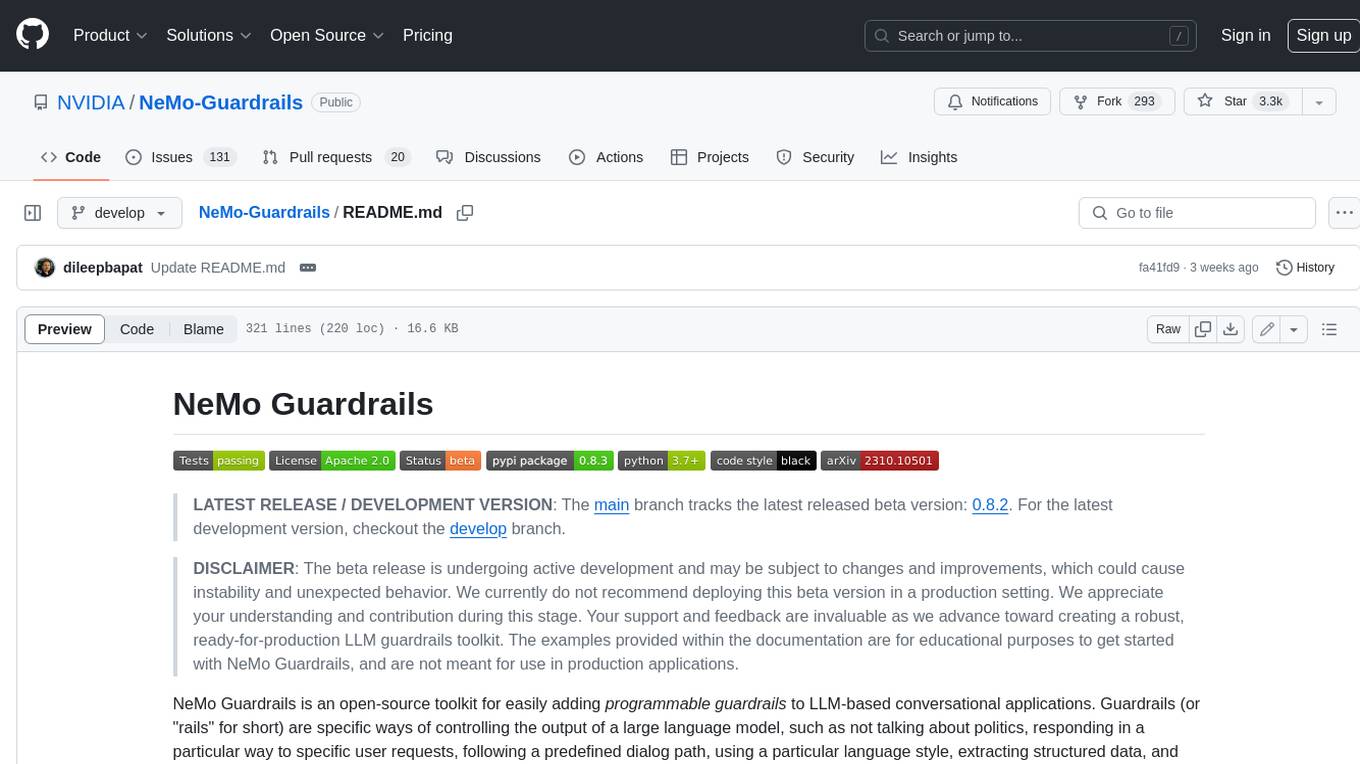
Guardrails
Guardrails is a security tool designed to help developers identify and fix security vulnerabilities in their code. It provides automated scanning and analysis of code repositories to detect potential security issues, such as sensitive data exposure, injection attacks, and insecure configurations. By integrating Guardrails into the development workflow, teams can proactively address security concerns and reduce the risk of security breaches. The tool offers detailed reports and actionable recommendations to guide developers in remediation efforts, ultimately improving the overall security posture of the codebase. Guardrails supports multiple programming languages and frameworks, making it versatile and adaptable to different development environments. With its user-friendly interface and seamless integration with popular version control systems, Guardrails empowers developers to prioritize security without compromising productivity.
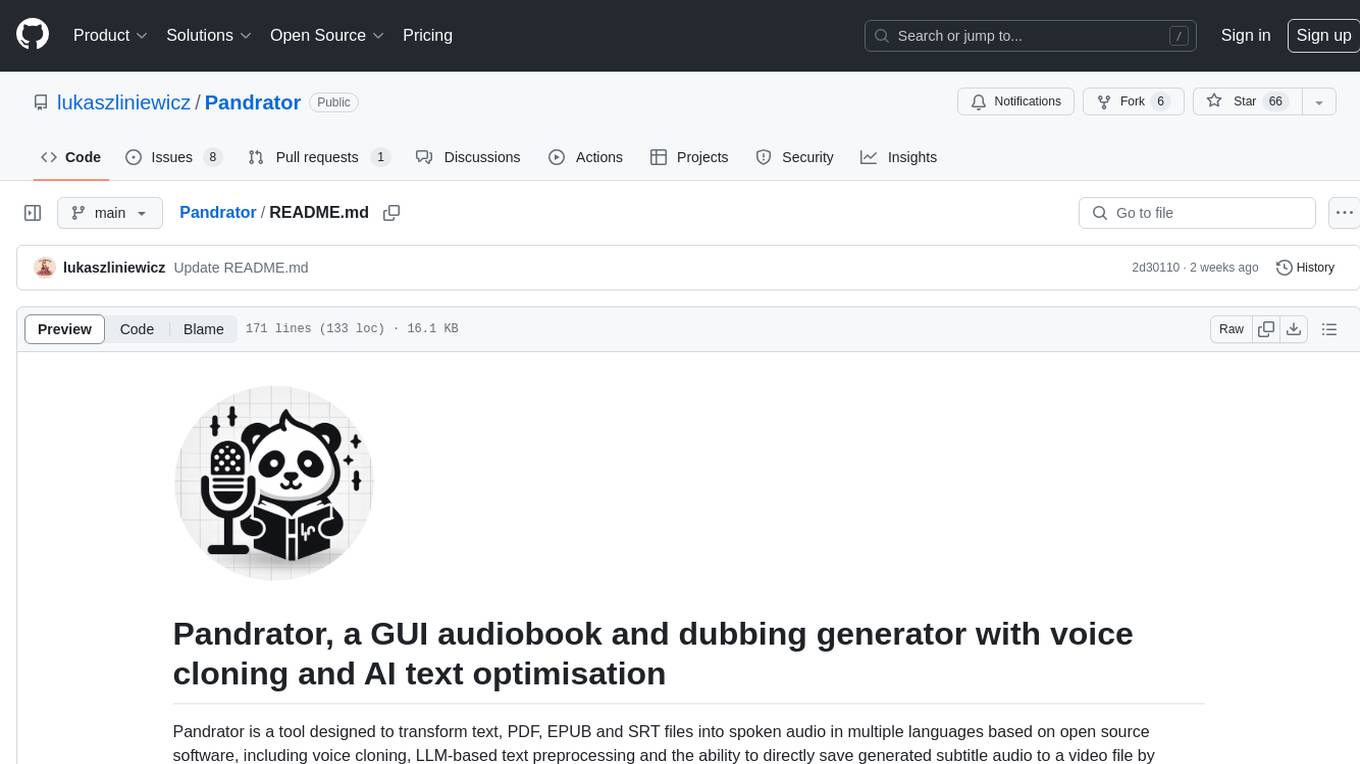
Pandrator
Pandrator is a GUI tool for generating audiobooks and dubbing using voice cloning and AI. It transforms text, PDF, EPUB, and SRT files into spoken audio in multiple languages. It leverages XTTS, Silero, and VoiceCraft models for text-to-speech conversion and voice cloning, with additional features like LLM-based text preprocessing and NISQA for audio quality evaluation. The tool aims to be user-friendly with a one-click installer and a graphical interface.
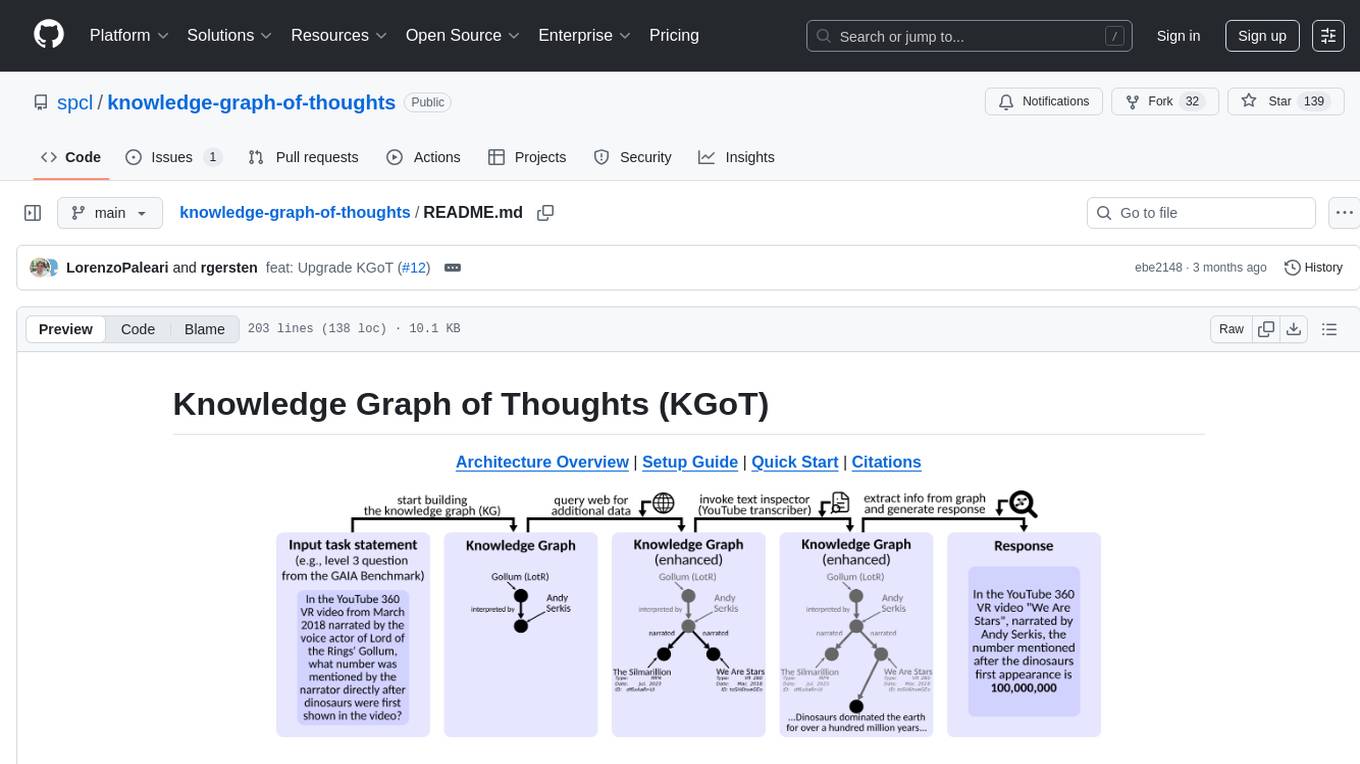
knowledge-graph-of-thoughts
Knowledge Graph of Thoughts (KGoT) is an innovative AI assistant architecture that integrates LLM reasoning with dynamically constructed knowledge graphs (KGs). KGoT extracts and structures task-relevant knowledge into a dynamic KG representation, iteratively enhanced through external tools such as math solvers, web crawlers, and Python scripts. Such structured representation of task-relevant knowledge enables low-cost models to solve complex tasks effectively. The KGoT system consists of three main components: the Controller, the Graph Store, and the Integrated Tools, each playing a critical role in the task-solving process.
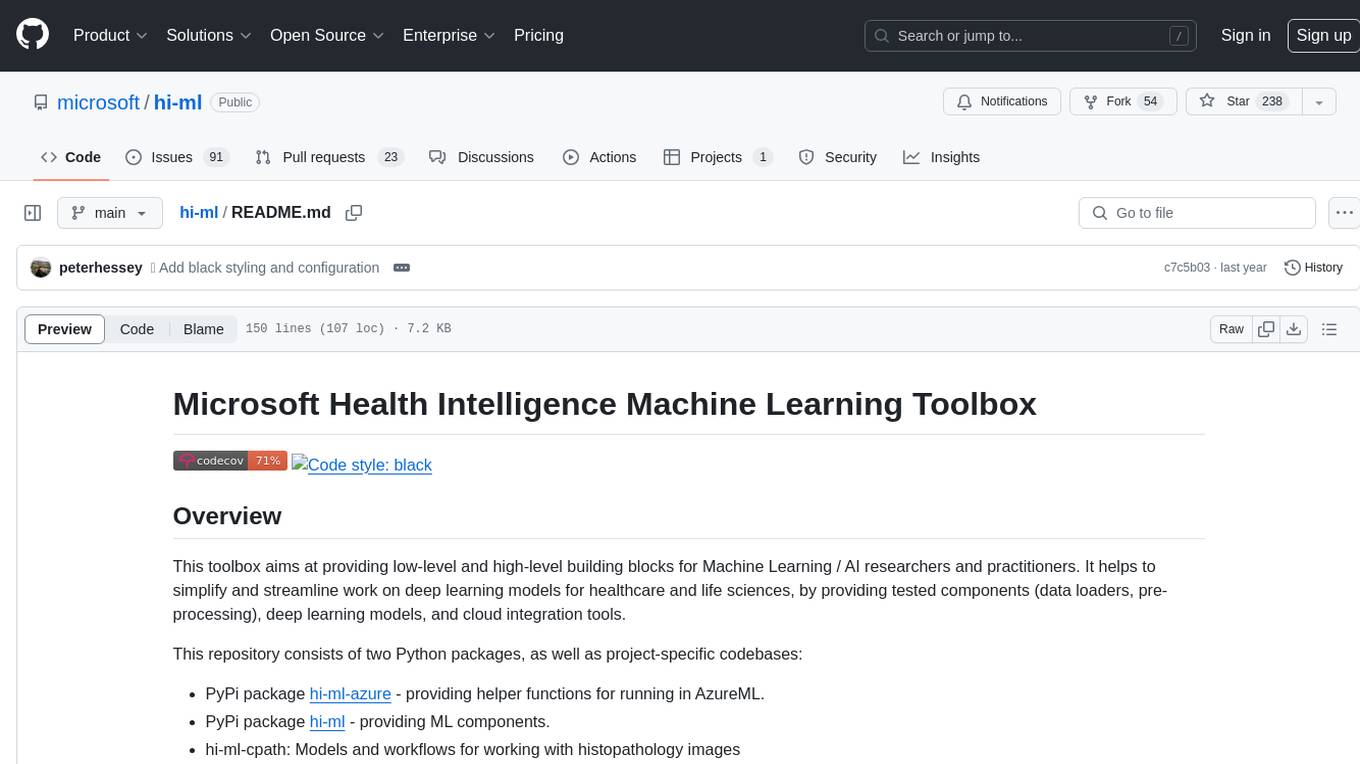
hi-ml
The Microsoft Health Intelligence Machine Learning Toolbox is a repository that provides low-level and high-level building blocks for Machine Learning / AI researchers and practitioners. It simplifies and streamlines work on deep learning models for healthcare and life sciences by offering tested components such as data loaders, pre-processing tools, deep learning models, and cloud integration utilities. The repository includes two Python packages, 'hi-ml-azure' for helper functions in AzureML, 'hi-ml' for ML components, and 'hi-ml-cpath' for models and workflows related to histopathology images.
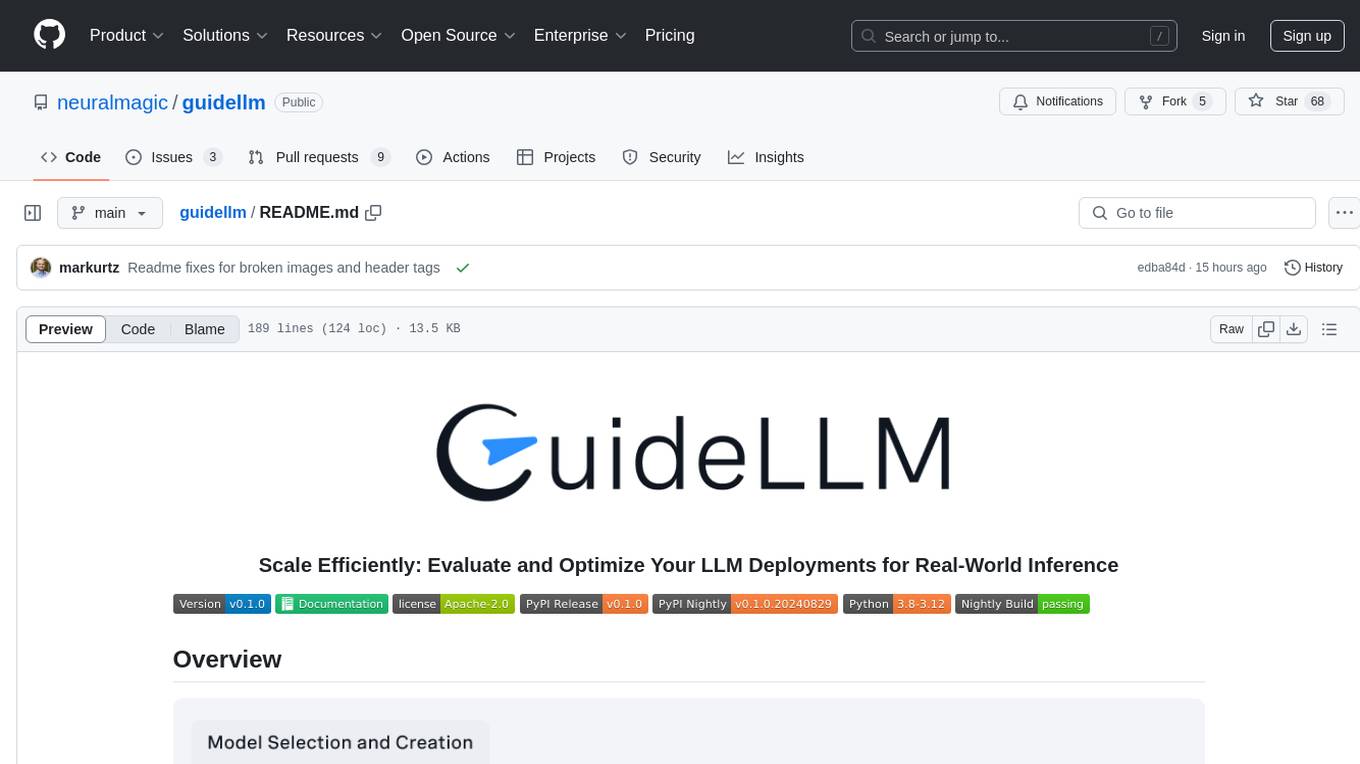
guidellm
GuideLLM is a powerful tool for evaluating and optimizing the deployment of large language models (LLMs). By simulating real-world inference workloads, GuideLLM helps users gauge the performance, resource needs, and cost implications of deploying LLMs on various hardware configurations. This approach ensures efficient, scalable, and cost-effective LLM inference serving while maintaining high service quality. Key features include performance evaluation, resource optimization, cost estimation, and scalability testing.

kaito
Kaito is an operator that automates the AI/ML inference model deployment in a Kubernetes cluster. It manages large model files using container images, avoids tuning deployment parameters to fit GPU hardware by providing preset configurations, auto-provisions GPU nodes based on model requirements, and hosts large model images in the public Microsoft Container Registry (MCR) if the license allows. Using Kaito, the workflow of onboarding large AI inference models in Kubernetes is largely simplified.
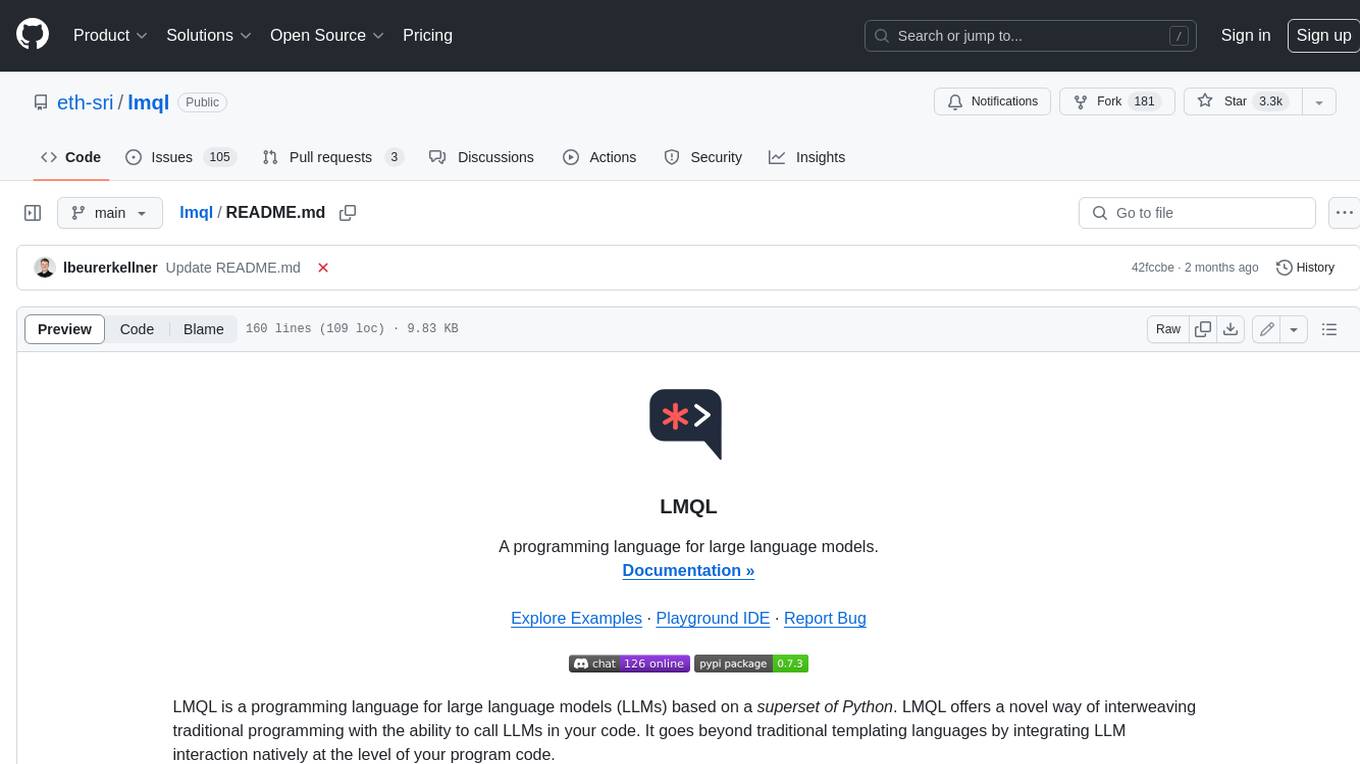
lmql
LMQL is a programming language designed for large language models (LLMs) that offers a unique way of integrating traditional programming with LLM interaction. It allows users to write programs that combine algorithmic logic with LLM calls, enabling model reasoning capabilities within the context of the program. LMQL provides features such as Python syntax integration, rich control-flow options, advanced decoding techniques, powerful constraints via logit masking, runtime optimization, sync and async API support, multi-model compatibility, and extensive applications like JSON decoding and interactive chat interfaces. The tool also offers library integration, flexible tooling, and output streaming options for easy model output handling.
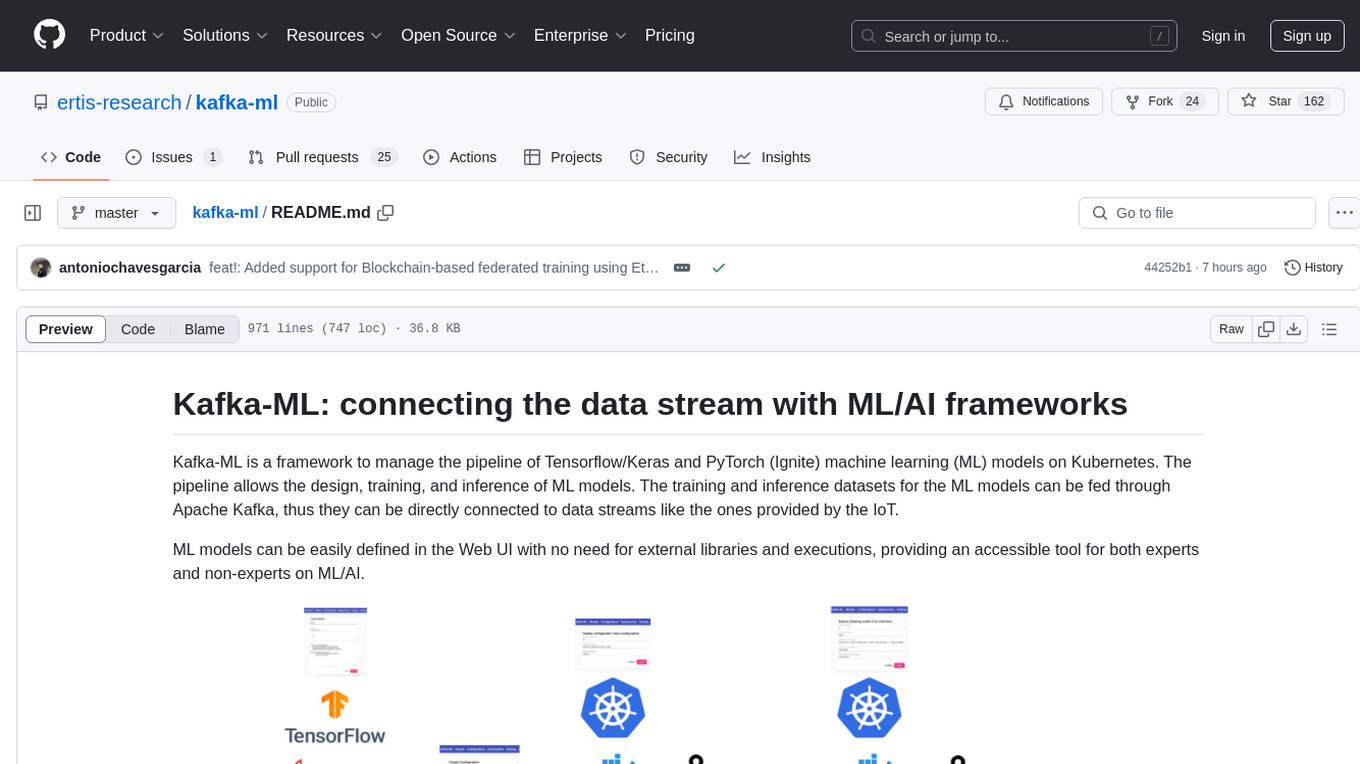
kafka-ml
Kafka-ML is a framework designed to manage the pipeline of Tensorflow/Keras and PyTorch machine learning models on Kubernetes. It enables the design, training, and inference of ML models with datasets fed through Apache Kafka, connecting them directly to data streams like those from IoT devices. The Web UI allows easy definition of ML models without external libraries, catering to both experts and non-experts in ML/AI.
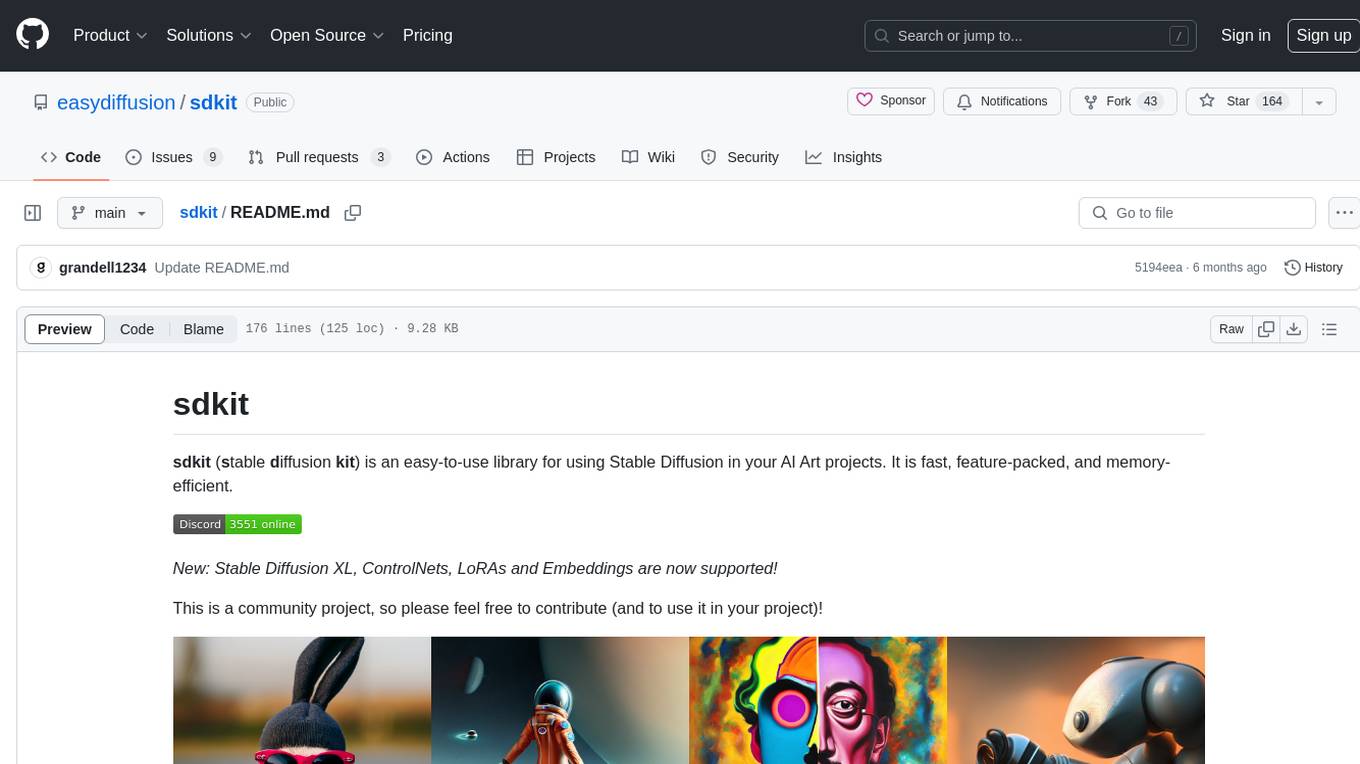
sdkit
sdkit (stable diffusion kit) is an easy-to-use library for utilizing Stable Diffusion in AI Art projects. It includes features like ControlNets, LoRAs, Textual Inversion Embeddings, GFPGAN, CodeFormer for face restoration, RealESRGAN for upscaling, k-samplers, support for custom VAEs, NSFW filter, model-downloader, parallel GPU support, and more. It offers a model database, auto-scanning for malicious models, and various optimizations. The API consists of modules for loading models, generating images, filters, model merging, and utilities, all managed through the sdkit.Context object.
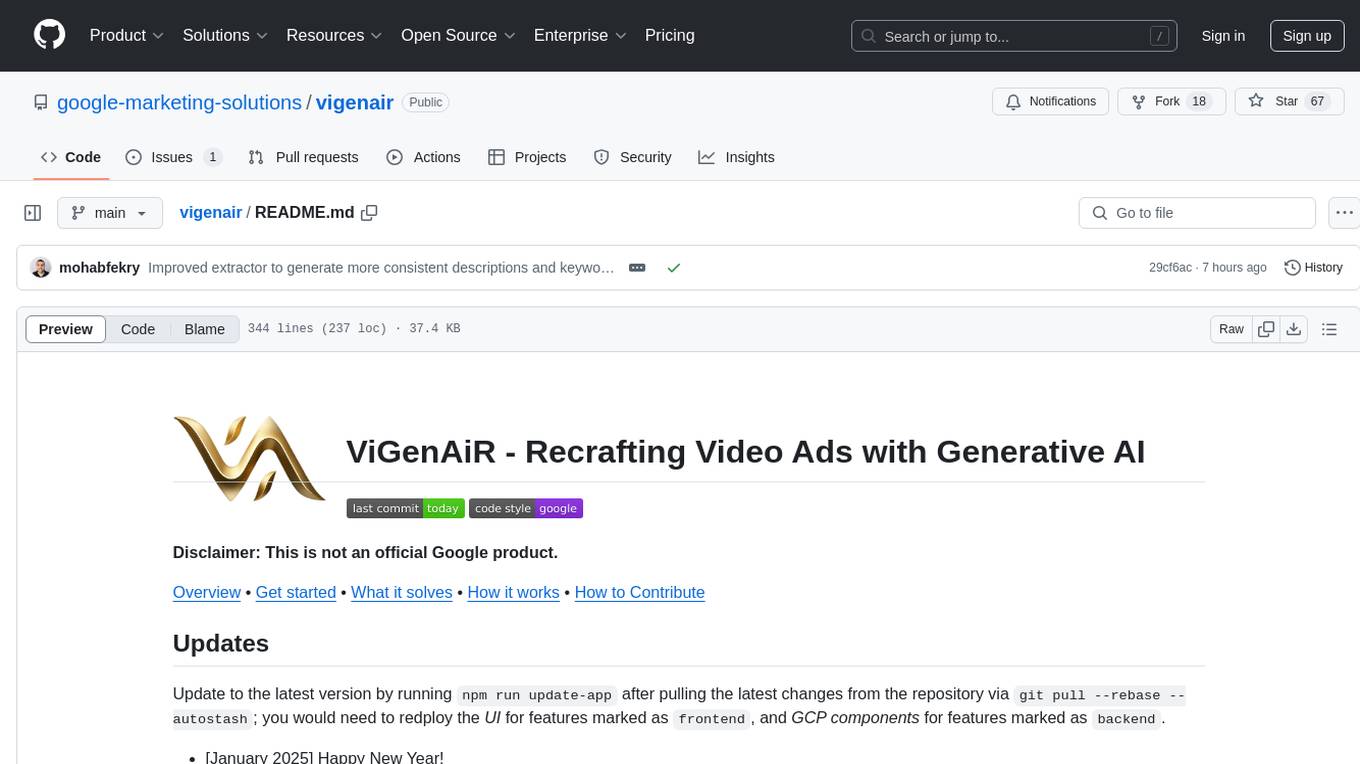
vigenair
ViGenAiR is a tool that harnesses the power of Generative AI models on Google Cloud Platform to automatically transform long-form Video Ads into shorter variants, targeting different audiences. It generates video, image, and text assets for Demand Gen and YouTube video campaigns. Users can steer the model towards generating desired videos, conduct A/B testing, and benefit from various creative features. The tool offers benefits like diverse inventory, compelling video ads, creative excellence, user control, and performance insights. ViGenAiR works by analyzing video content, splitting it into coherent segments, and generating variants following Google's best practices for effective ads.

airflow
Apache Airflow (or simply Airflow) is a platform to programmatically author, schedule, and monitor workflows. When workflows are defined as code, they become more maintainable, versionable, testable, and collaborative. Use Airflow to author workflows as directed acyclic graphs (DAGs) of tasks. The Airflow scheduler executes your tasks on an array of workers while following the specified dependencies. Rich command line utilities make performing complex surgeries on DAGs a snap. The rich user interface makes it easy to visualize pipelines running in production, monitor progress, and troubleshoot issues when needed.
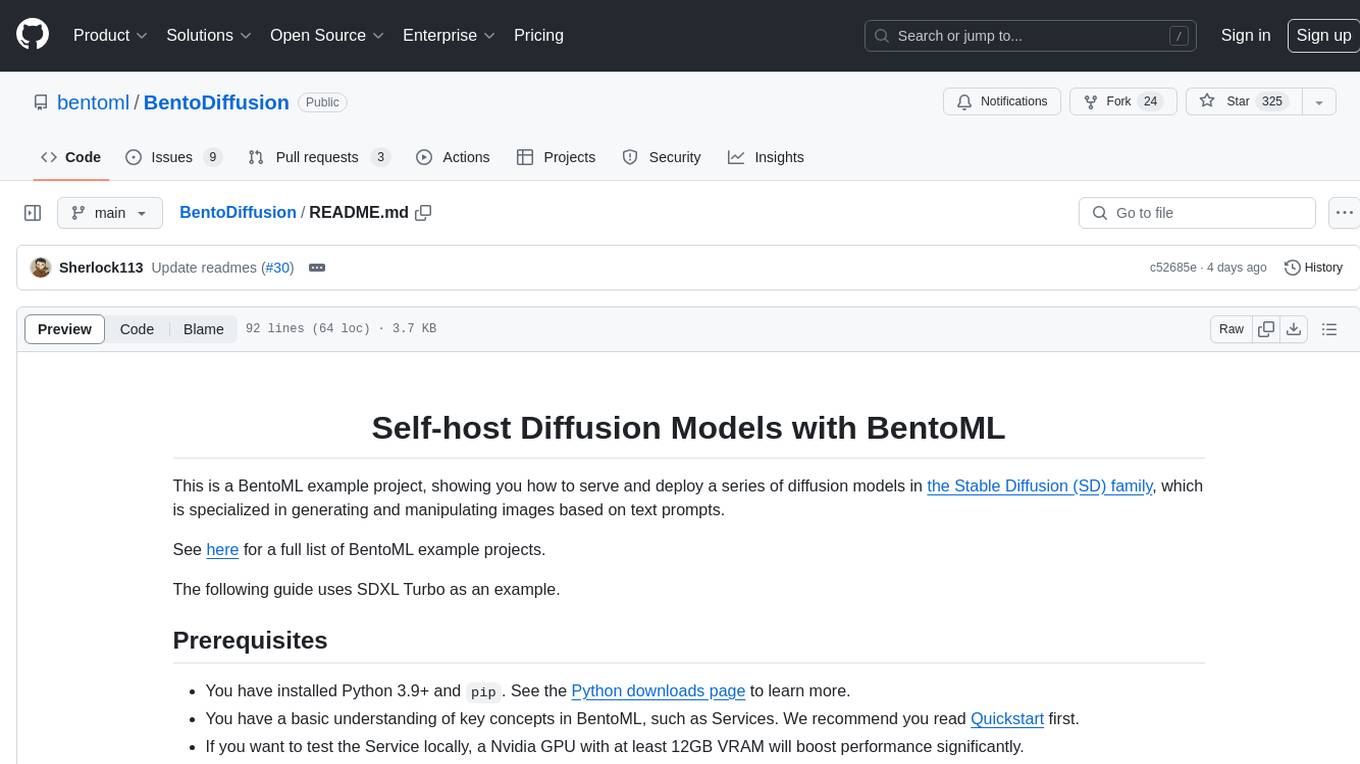
BentoDiffusion
BentoDiffusion is a BentoML example project that demonstrates how to serve and deploy diffusion models in the Stable Diffusion (SD) family. These models are specialized in generating and manipulating images based on text prompts. The project provides a guide on using SDXL Turbo as an example, along with instructions on prerequisites, installing dependencies, running the BentoML service, and deploying to BentoCloud. Users can interact with the deployed service using Swagger UI or other methods. Additionally, the project offers the option to choose from various diffusion models available in the repository for deployment.
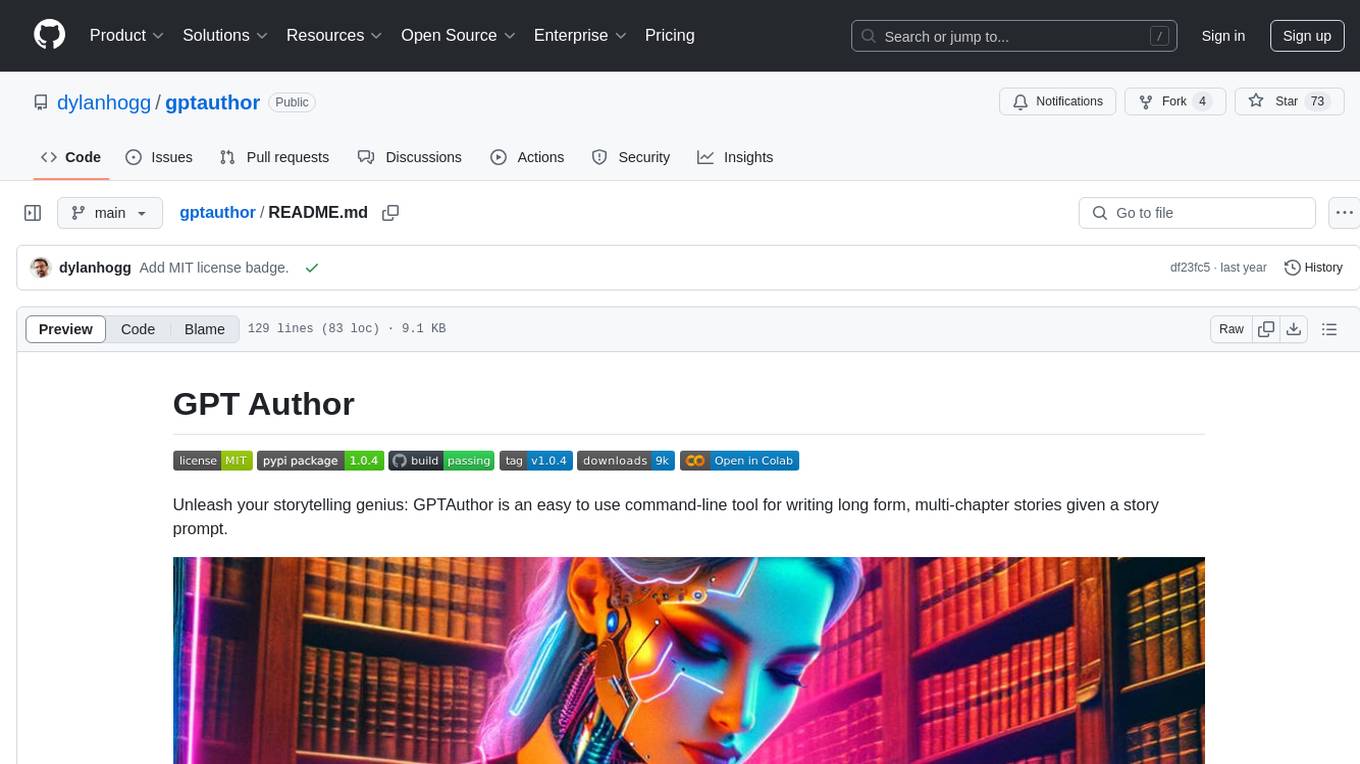
gptauthor
GPT Author is a command-line tool designed to help users write long form, multi-chapter stories by providing a story prompt and generating a synopsis and subsequent chapters using ChatGPT. Users can review and make changes to the generated content before finalizing the story output in Markdown and HTML formats. The tool aims to unleash storytelling genius by combining human input with AI-generated content, offering a seamless writing experience for creating engaging narratives.
For similar tasks

MARS5-TTS
MARS5 is a novel English speech model (TTS) developed by CAMB.AI, featuring a two-stage AR-NAR pipeline with a unique NAR component. The model can generate speech for various scenarios like sports commentary and anime with just 5 seconds of audio and a text snippet. It allows steering prosody using punctuation and capitalization in the transcript. Speaker identity is specified using an audio reference file, enabling 'deep clone' for improved quality. The model can be used via torch.hub or HuggingFace, supporting both shallow and deep cloning for inference. Checkpoints are provided for AR and NAR models, with hardware requirements of 750M+450M params on GPU. Contributions to improve model stability, performance, and reference audio selection are welcome.
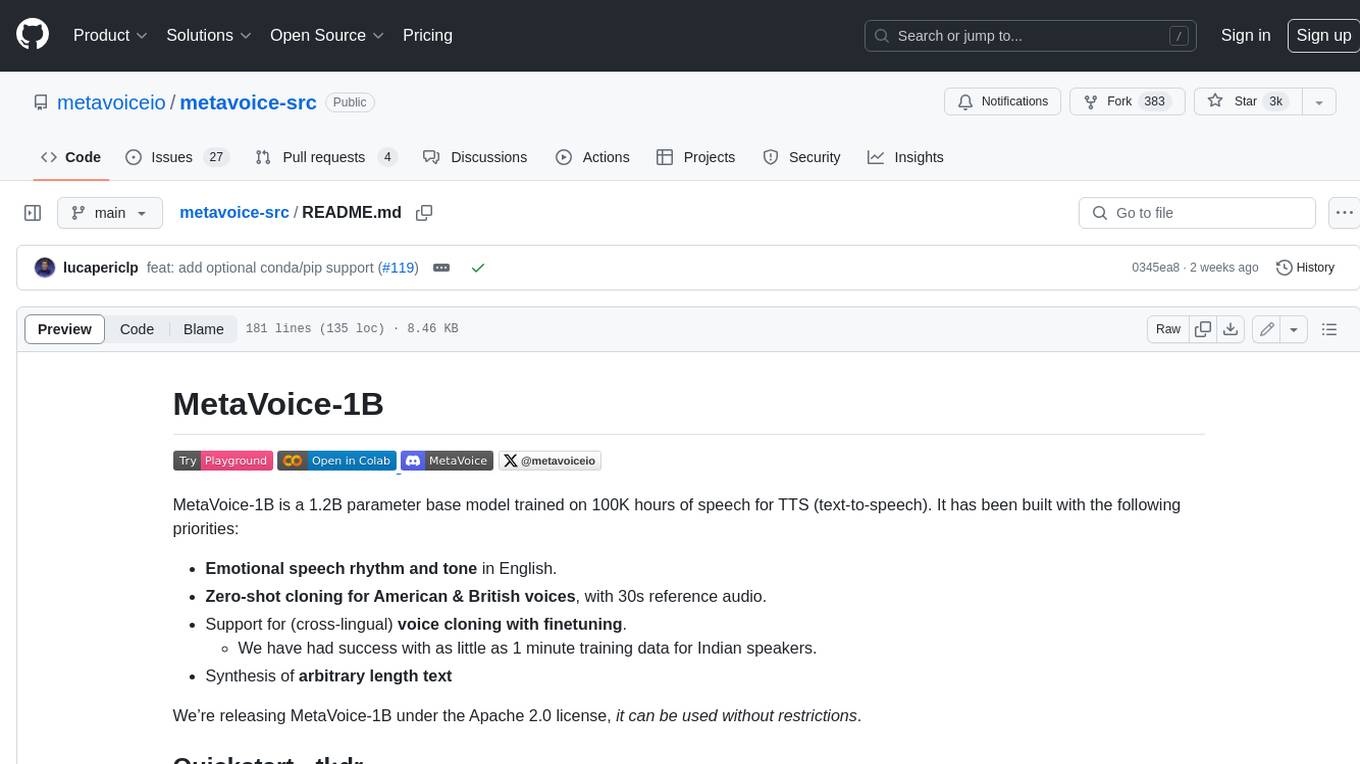
metavoice-src
MetaVoice-1B is a 1.2B parameter base model trained on 100K hours of speech for TTS (text-to-speech). It has been built with the following priorities: * Emotional speech rhythm and tone in English. * Zero-shot cloning for American & British voices, with 30s reference audio. * Support for (cross-lingual) voice cloning with finetuning. * We have had success with as little as 1 minute training data for Indian speakers. * Synthesis of arbitrary length text
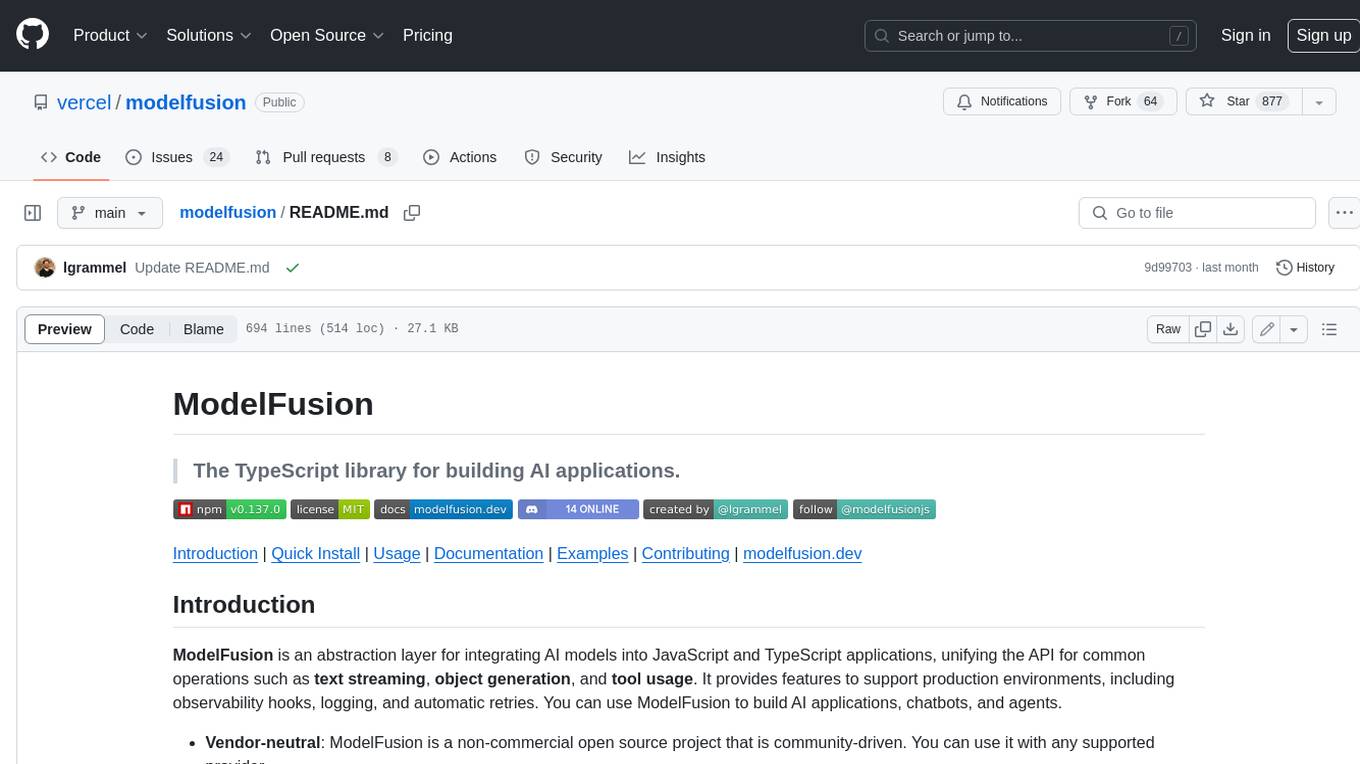
modelfusion
ModelFusion is an abstraction layer for integrating AI models into JavaScript and TypeScript applications, unifying the API for common operations such as text streaming, object generation, and tool usage. It provides features to support production environments, including observability hooks, logging, and automatic retries. You can use ModelFusion to build AI applications, chatbots, and agents. ModelFusion is a non-commercial open source project that is community-driven. You can use it with any supported provider. ModelFusion supports a wide range of models including text generation, image generation, vision, text-to-speech, speech-to-text, and embedding models. ModelFusion infers TypeScript types wherever possible and validates model responses. ModelFusion provides an observer framework and logging support. ModelFusion ensures seamless operation through automatic retries, throttling, and error handling mechanisms. ModelFusion is fully tree-shakeable, can be used in serverless environments, and only uses a minimal set of dependencies.
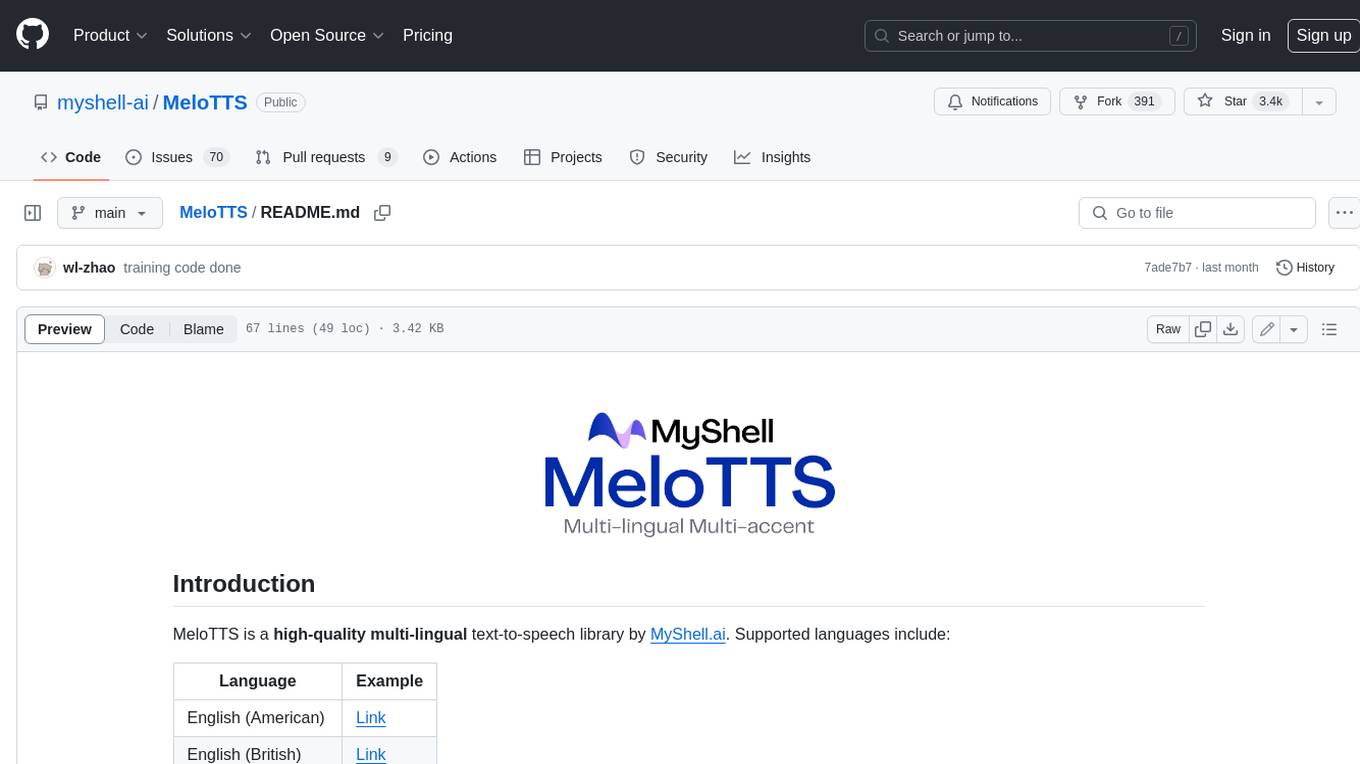
MeloTTS
MeloTTS is a high-quality multi-lingual text-to-speech library by MyShell.ai. It supports various languages including English (American, British, Indian, Australian), Spanish, French, Chinese, Japanese, and Korean. The Chinese speaker also supports mixed Chinese and English. The library is fast enough for CPU real-time inference and offers features like using without installation, local installation, and training on custom datasets. The Python API and model cards are available in the repository and on HuggingFace. The community can join the Discord channel for discussions and collaboration opportunities. Contributions are welcome, and the library is under the MIT License. MeloTTS is based on TTS, VITS, VITS2, and Bert-VITS2.
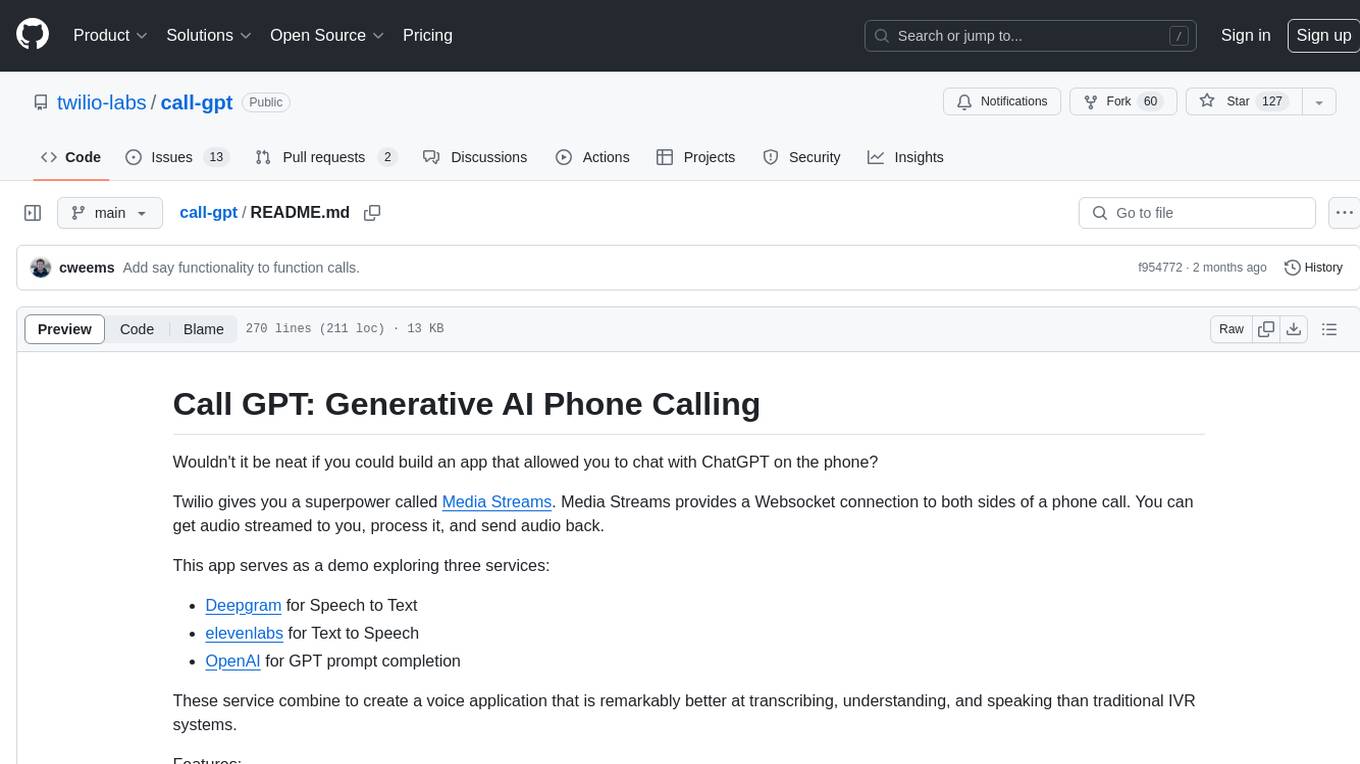
call-gpt
Call GPT is a voice application that utilizes Deepgram for Speech to Text, elevenlabs for Text to Speech, and OpenAI for GPT prompt completion. It allows users to chat with ChatGPT on the phone, providing better transcription, understanding, and speaking capabilities than traditional IVR systems. The app returns responses with low latency, allows user interruptions, maintains chat history, and enables GPT to call external tools. It coordinates data flow between Deepgram, OpenAI, ElevenLabs, and Twilio Media Streams, enhancing voice interactions.
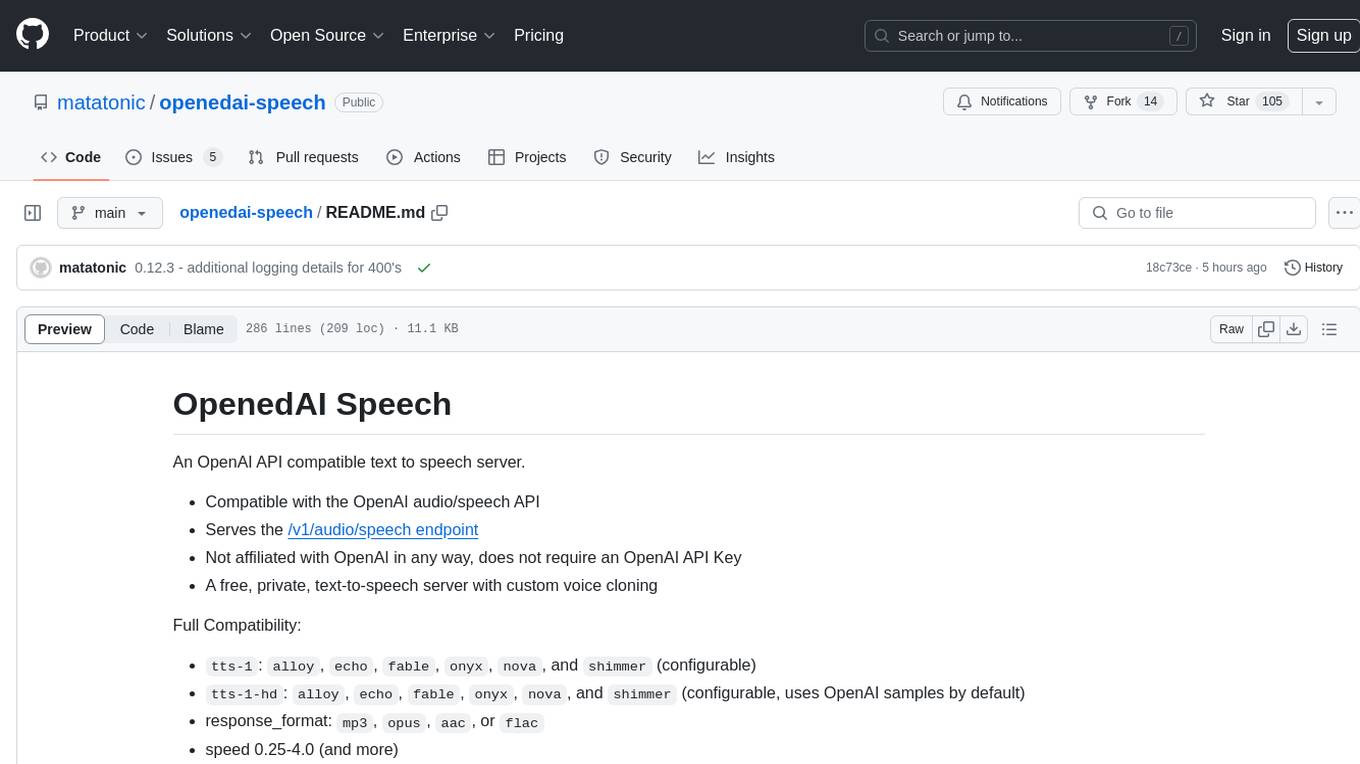
openedai-speech
OpenedAI Speech is a free, private text-to-speech server compatible with the OpenAI audio/speech API. It offers custom voice cloning and supports various models like tts-1 and tts-1-hd. Users can map their own piper voices and create custom cloned voices. The server provides multilingual support with XTTS voices and allows fixing incorrect sounds with regex. Recent changes include bug fixes, improved error handling, and updates for multilingual support. Installation can be done via Docker or manual setup, with usage instructions provided. Custom voices can be created using Piper or Coqui XTTS v2, with guidelines for preparing audio files. The tool is suitable for tasks like generating speech from text, creating custom voices, and multilingual text-to-speech applications.
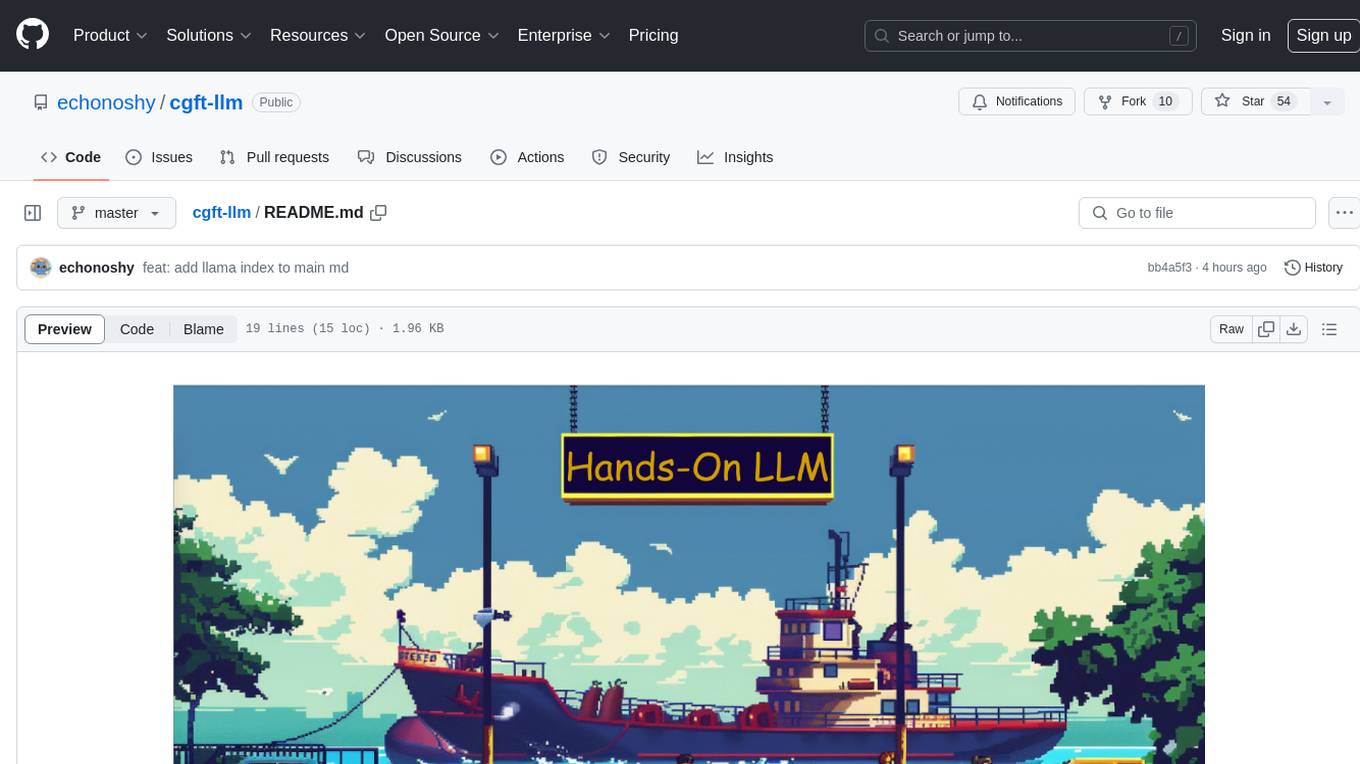
cgft-llm
The cgft-llm repository is a collection of video tutorials and documentation for implementing large models. It provides guidance on topics such as fine-tuning llama3 with llama-factory, lightweight deployment and quantization using llama.cpp, speech generation with ChatTTS, introduction to Ollama for large model deployment, deployment tools for vllm and paged attention, and implementing RAG with llama-index. Users can find detailed code documentation and video tutorials for each project in the repository.
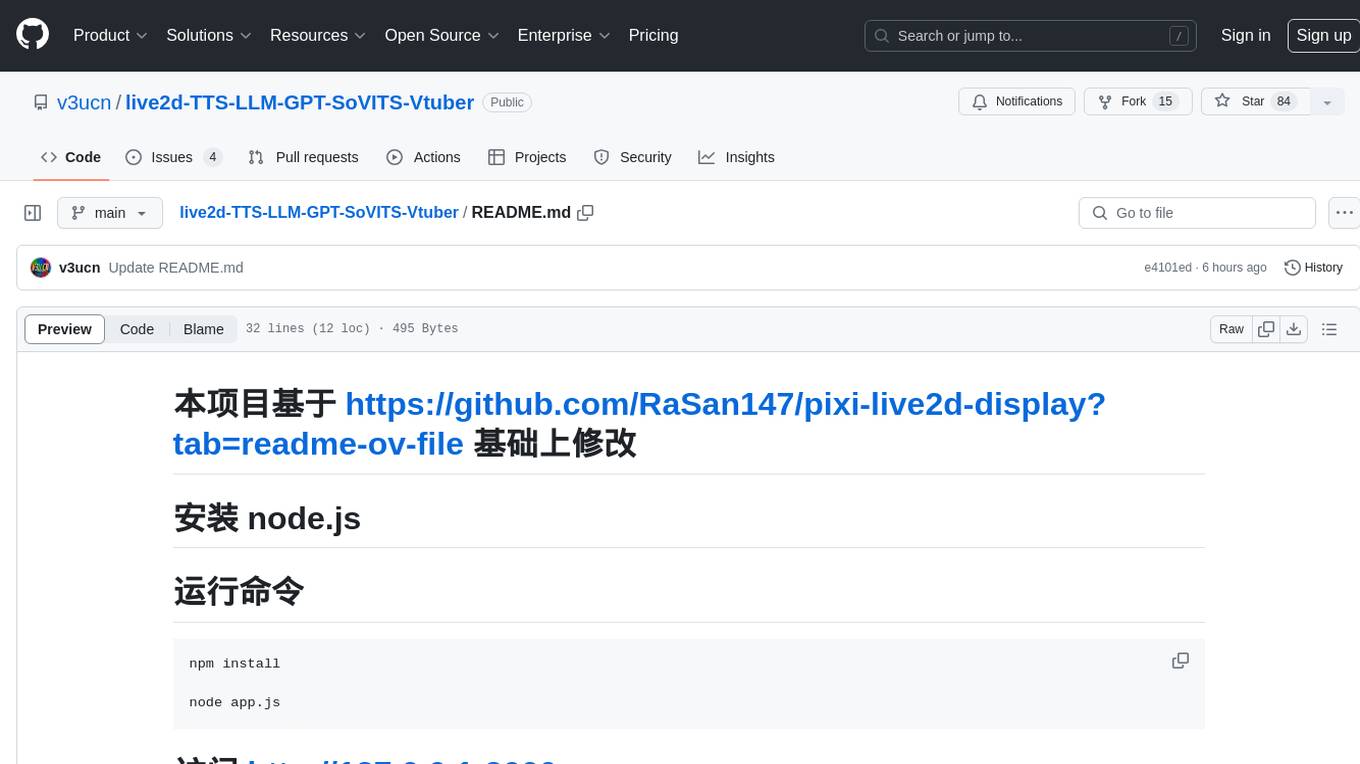
live2d-TTS-LLM-GPT-SoVITS-Vtuber
This repository is a modification based on the pixi-live2d-display project. It provides a platform for TTS (Text-to-Speech) functionality and a large model voice chat page. Users can install node.js, run the provided commands, and access the specified URLs to utilize the features.
For similar jobs

sweep
Sweep is an AI junior developer that turns bugs and feature requests into code changes. It automatically handles developer experience improvements like adding type hints and improving test coverage.

teams-ai
The Teams AI Library is a software development kit (SDK) that helps developers create bots that can interact with Teams and Microsoft 365 applications. It is built on top of the Bot Framework SDK and simplifies the process of developing bots that interact with Teams' artificial intelligence capabilities. The SDK is available for JavaScript/TypeScript, .NET, and Python.

ai-guide
This guide is dedicated to Large Language Models (LLMs) that you can run on your home computer. It assumes your PC is a lower-end, non-gaming setup.

classifai
Supercharge WordPress Content Workflows and Engagement with Artificial Intelligence. Tap into leading cloud-based services like OpenAI, Microsoft Azure AI, Google Gemini and IBM Watson to augment your WordPress-powered websites. Publish content faster while improving SEO performance and increasing audience engagement. ClassifAI integrates Artificial Intelligence and Machine Learning technologies to lighten your workload and eliminate tedious tasks, giving you more time to create original content that matters.

chatbot-ui
Chatbot UI is an open-source AI chat app that allows users to create and deploy their own AI chatbots. It is easy to use and can be customized to fit any need. Chatbot UI is perfect for businesses, developers, and anyone who wants to create a chatbot.

BricksLLM
BricksLLM is a cloud native AI gateway written in Go. Currently, it provides native support for OpenAI, Anthropic, Azure OpenAI and vLLM. BricksLLM aims to provide enterprise level infrastructure that can power any LLM production use cases. Here are some use cases for BricksLLM: * Set LLM usage limits for users on different pricing tiers * Track LLM usage on a per user and per organization basis * Block or redact requests containing PIIs * Improve LLM reliability with failovers, retries and caching * Distribute API keys with rate limits and cost limits for internal development/production use cases * Distribute API keys with rate limits and cost limits for students

uAgents
uAgents is a Python library developed by Fetch.ai that allows for the creation of autonomous AI agents. These agents can perform various tasks on a schedule or take action on various events. uAgents are easy to create and manage, and they are connected to a fast-growing network of other uAgents. They are also secure, with cryptographically secured messages and wallets.

griptape
Griptape is a modular Python framework for building AI-powered applications that securely connect to your enterprise data and APIs. It offers developers the ability to maintain control and flexibility at every step. Griptape's core components include Structures (Agents, Pipelines, and Workflows), Tasks, Tools, Memory (Conversation Memory, Task Memory, and Meta Memory), Drivers (Prompt and Embedding Drivers, Vector Store Drivers, Image Generation Drivers, Image Query Drivers, SQL Drivers, Web Scraper Drivers, and Conversation Memory Drivers), Engines (Query Engines, Extraction Engines, Summary Engines, Image Generation Engines, and Image Query Engines), and additional components (Rulesets, Loaders, Artifacts, Chunkers, and Tokenizers). Griptape enables developers to create AI-powered applications with ease and efficiency.





